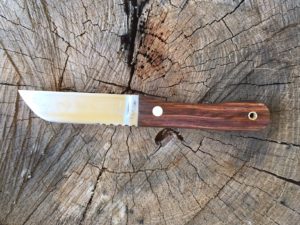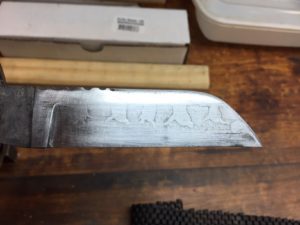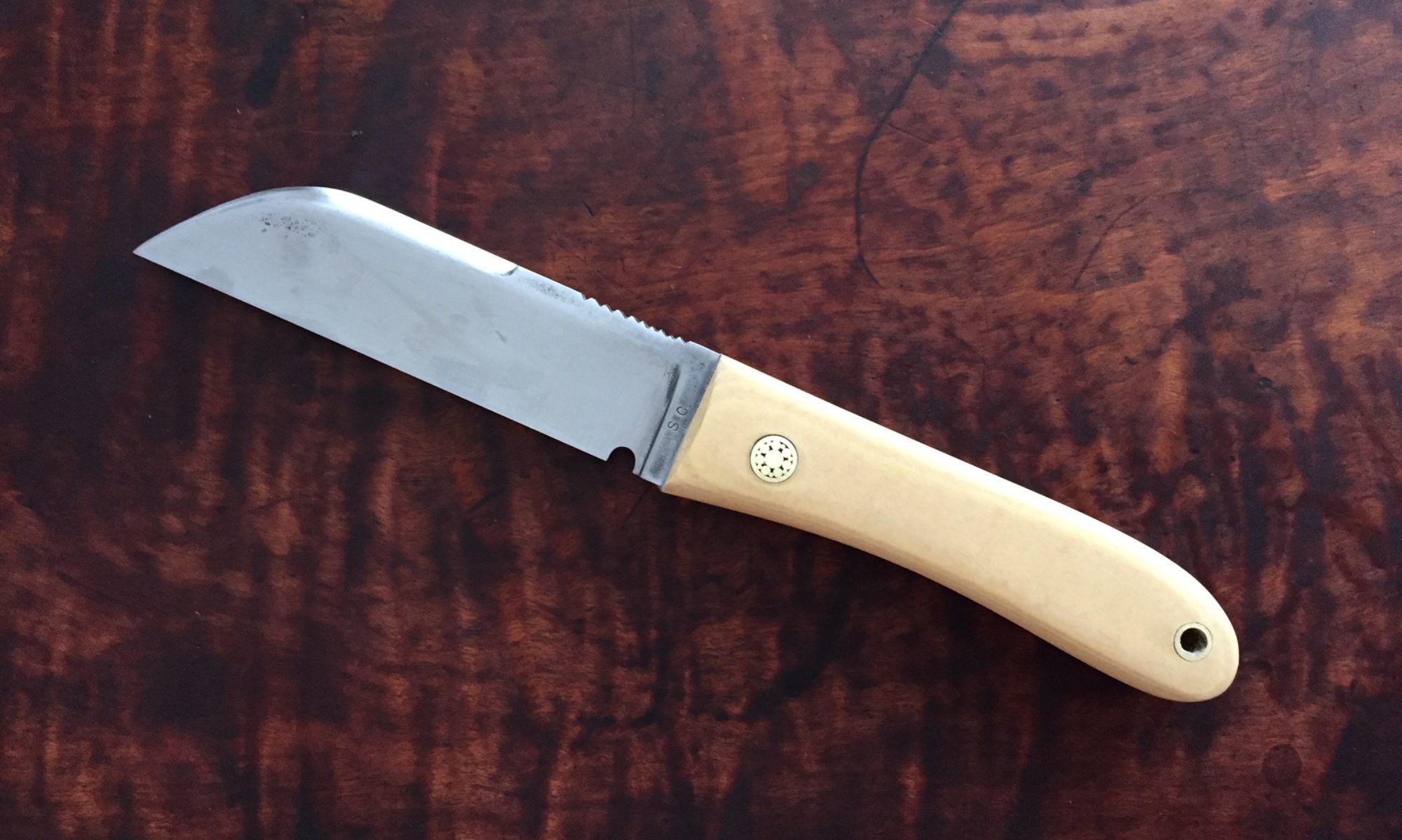One of my ongoing projects is making a rigging knife. Wharncliffe style blade or more properly a sheepsfoot blade. It resembles a old Seax or Sax knife of Viking times The blade style has the advantage of a linear length of blade for slicing, especially cord and line, quickly. A strong spine for rugged use. Thumb notches for pressing down on blade. Also I’m differently hardening the blade with a clay like substance to control my hardening. I want the blade cutting edge part super hard for a very sharp cutting edge and a softer spine for making it springy instead of snapping. Depending on the steel, the Hamon (the differentiation between hard and softer steel grains). Its funny as my interest is independent of an apparent interest in the blade type for defensive uses. There are three different forms, the sheepsfoot blade, lambfoot (which has no piercing point) and a Wharncliffe which is a bit more pointy but originally a folding knife blade for whittling.
I started with a flat grind on this first rigging knife:
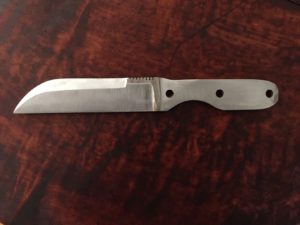
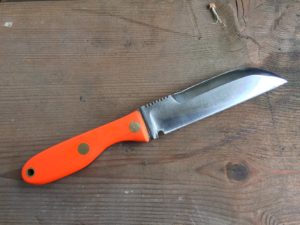
This is with O1 carbon steel and g10 slabs, 3.75 inch blade. 1/4 stock
My next version of a rigging knife was with a hollow grind, 3.75 inch blade, hollow ground with antique ivory paper micarta handles, O1 steel, 1/4 steel. Hardened differentially in the forge. Canola oil to quench.
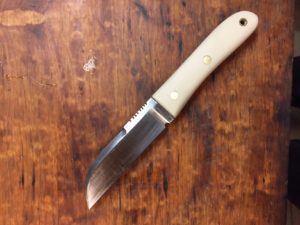
and my next Wharncliffe rigging knife, this with bone micarta and a patterned pin. Still with O1.
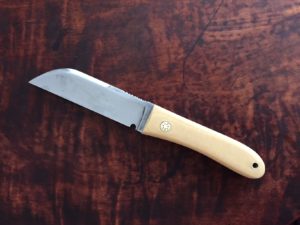
Then on to 1080 steel rigging knife, with G10 Ghost jade handles, hamon. Brass pin and lanyard hole. G10 is kind of messy with fiberglass.
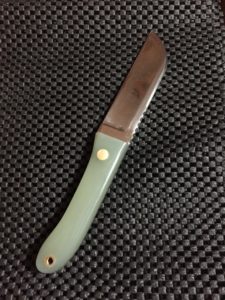
Some interesting activity in this knife.
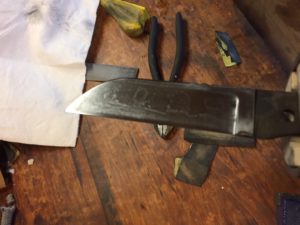
Almost looks like a scene from a Chinese scroll, water, islands, pines.
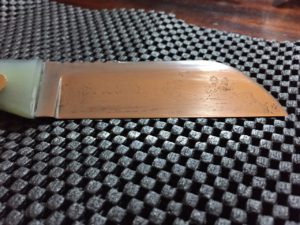
In Cocobolo, I changed over from trying to cut thumb notches and used jigging.
